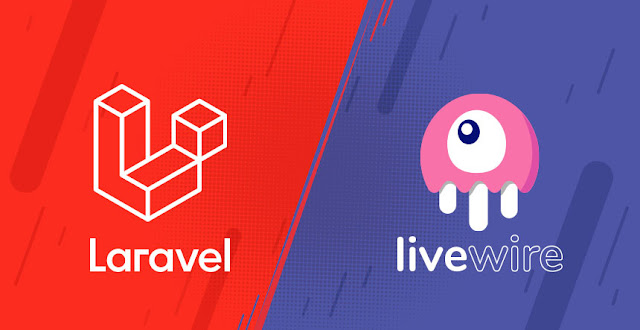Laravel Livewire simplifies the process of building dynamic, reactive interfaces using Laravel’s server-side rendering capabilities. However, there are times when incorporating frontend frameworks like Vue.js, React, or Alpine.js can enhance interactivity and state management. This article will guide you through managing interactivity and state across Livewire and these frontend frameworks.
Why Combine Livewire with Frontend Frameworks?
Combining Livewire with frontend frameworks can offer the following benefits:
1. Enhanced Interactivity: Frontend frameworks provide advanced interactivity and reactivity that complement Livewire's capabilities.
2. Complex State Management: Frameworks like Vue.js and React are well-suited for managing complex state, which can simplify development.
3. Rich Ecosystem: Leverage the vast ecosystem of libraries and components available in frontend frameworks.
Integrating Livewire with Vue.js
Vue.js is a progressive framework for building user interfaces. Here’s how to integrate it with Livewire:
1. Install Vue.js: First, install Vue.js via npm.
npm install vue
2. Initialize Vue.js in Your Project: Set up Vue.js in your `resources/js/app.js` file.
import Vue from 'vue';
const app = new Vue({
el: '#app',
});
3. Create a Vue Component: Define a Vue component.
Vue.component('example-component', {
template: '<div>{{ message }}</div>',
data() {
return {
message: 'Hello from Vue!'
};
}
});
4. Use Vue Component in Blade Template: Embed the Vue component in your Blade template alongside Livewire.
<!-- resources/views/welcome.blade.php -->
<div id="app">
<livewire:example-livewire-component />
<example-component></example-component>
</div>
5. Communicate Between Livewire and Vue.js: Use events to communicate between Livewire and Vue.js components.
// Livewire Component
class ExampleLivewireComponent extends Component
{
public $message = 'Hello from Livewire!';
public function updateMessage()
{
$this->message = 'Updated Livewire Message!';
$this->emit('messageUpdated', $this->message);
}
public function render()
{
return view('livewire.example-livewire-component');
}
}
// Vue Component
Vue.component('example-component', {
template: '<div>{{ message }}</div>',
data() {
return {
message: 'Hello from Vue!'
};
},
created() {
window.livewire.on('messageUpdated', (newMessage) => {
this.message = newMessage;
});
}
});
Integrating Livewire with React
React is a popular library for building user interfaces. Here’s how to integrate it with Livewire:
1. Install React: Install React via npm.
npm install react react-dom
2. Initialize React in Your Project: Set up React in your `resources/js/app.js` file.
import React from 'react';
import ReactDOM from 'react-dom';
function ExampleComponent() {
const [message, setMessage] = React.useState('Hello from React!');
React.useEffect(() => {
window.livewire.on('messageUpdated', (newMessage) => {
setMessage(newMessage);
});
}, []);
return <div>{message}</div>;
}
ReactDOM.render(<ExampleComponent />, document.getElementById('react-root'));
3. Use React Component in Blade Template: Add a div with an id to render the React component.
<!-- resources/views/welcome.blade.php -->
<div>
<livewire:example-livewire-component />
<div id="react-root"></div>
</div>
4. Communicate Between Livewire and React: Use events to communicate between Livewire and React components.
// Livewire Component
class ExampleLivewireComponent extends Component
{
public $message = 'Hello from Livewire!';
public function updateMessage()
{
$this->message = 'Updated Livewire Message!';
$this->emit('messageUpdated', $this->message);
}
public function render()
{
return view('livewire.example-livewire-component');
}
}
// React Component
import React, { useState, useEffect } from 'react';
function ExampleComponent() {
const [message, setMessage] = useState('Hello from React!');
useEffect(() => {
window.livewire.on('messageUpdated', (newMessage) => {
setMessage(newMessage);
});
}, []);
return <div>{message}</div>;
}
ReactDOM.render(<ExampleComponent />, document.getElementById('react-root'));
Integrating Livewire with Alpine.js
Alpine.js is a minimal JavaScript framework for adding interactivity. Here’s how to integrate it with Livewire:
1. Include Alpine.js: Include Alpine.js in your Blade template via CDN.
<!-- resources/views/welcome.blade.php -->
<script src="//unpkg.com/alpinejs" defer></script>
2. Add Alpine.js Functionality: Use Alpine.js directives to add interactivity.
<!-- resources/views/welcome.blade.php -->
<div>
<livewire:example-livewire-component />
<div x-data="{ message: 'Hello from Alpine!' }">
<p x-text="message"></p>
<button @click="message = 'Updated Alpine Message!'">Update Message</button>
</div>
</div>
3. Communicate Between Livewire and Alpine.js: Use Livewire events to update Alpine.js state.
// Livewire Component
class ExampleLivewireComponent extends Component
{
public $message = 'Hello from Livewire!';
public function updateMessage()
{
$this->message = 'Updated Livewire Message!';
$this->emit('messageUpdated', $this->message);
}
public function render()
{
return view('livewire.example-livewire-component');
}
}
<!-- resources/views/welcome.blade.php -->
<div x-data="{ message: 'Hello from Alpine!' }" x-init="
window.livewire.on('messageUpdated', (newMessage) => {
message = newMessage;
});
">
<livewire:example-livewire-component />
<p x-text="message"></p>
<button @click="message = 'Updated Alpine Message!'">Update Message</button>
</div>
Managing interactivity and state across Livewire and frontend frameworks like Vue.js, React, and Alpine.js can significantly enhance your web application's capabilities. By leveraging the strengths of each technology, you can create a more dynamic, responsive, and efficient user experience. Whether you're using Vue.js for its advanced reactivity, React for its component-based architecture, or Alpine.js for its simplicity, integrating these frameworks with Livewire can help you build robust and maintainable applications.

.png)


.png)

.png)

0 Comments